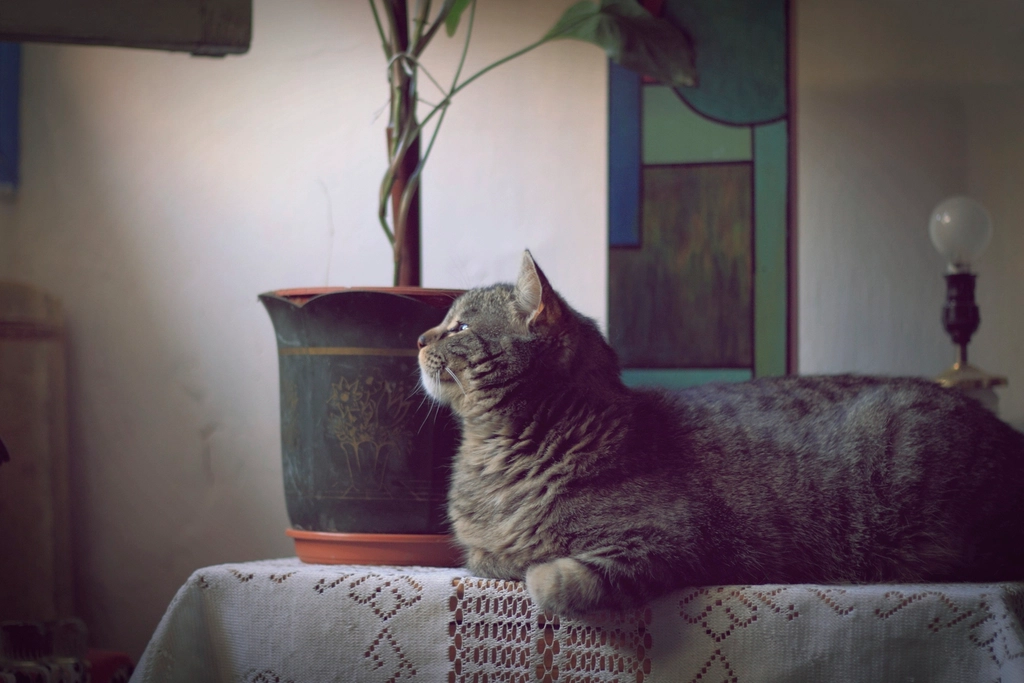Did you ever wonder if your cat feels things the way you do? Spoiler: they absolutely do—and probably more than you think. Watching a kitten turn into a wise old feline is a journey packed with surprises, little triumphs, and a whole lot of heart. Each stage of a cat’s life comes with its own set of emotional breakthroughs, and if you know what to look for, you’ll see just how rich your cat’s inner world really is. Let’s take a walk through the 10 emotional milestones your cat will hit as they grow older. Prepare to be amazed—and maybe even a little teary-eyed.
First Bonding: The Heart-Melting Attachment

One of the earliest emotional milestones your cat experiences happens as a kitten: the first time they bond with you or their primary caregiver. This isn’t just about food and shelter. Your kitten learns to trust, to seek warmth, and to recognize your scent. When you pick them up and they curl into your neck, that’s pure emotional connection blossoming. It’s the feline equivalent of a baby’s first smile—utterly priceless. This attachment sets the stage for all future relationships. You might notice your kitten following you from room to room, or crying when you leave their sight, a sure sign their tiny heart has picked you as their person. This milestone lays the foundation for lifelong companionship.
Learning Play: Joy and Social Skills Unleashed

Playtime isn’t just about burning energy—it’s where your cat learns joy, confidence, and social nuances. Kittens use play to practice hunting, but it’s also how they discover boundaries and trust. The first time your cat brings you a toy or pounces clumsily at a string, they’re learning the rules of interaction. These goofy games build emotional intelligence, teaching them when to be gentle and when to be bold. If you’ve ever laughed as your kitten missed a jump and looked around sheepishly, you’ve seen the spark of humor and embarrassment flicker across their face. Play is emotional education in disguise.
First Fear: The Surprising Power of Caution

At a certain age, usually between 8 to 12 weeks, kittens experience their first real fear. A sudden noise, a strange person, or even a new scent can send them bolting for cover. This is more than just a survival instinct—it’s an emotional rite of passage. They’re learning how to navigate the world’s uncertainties. If you comfort them after a scare, you’re teaching them that it’s safe to return and that comfort is available when things get tough. This milestone helps shape a cautious, emotionally resilient cat.
Independence: The Sweet Taste of Freedom

Growing up means learning to be alone sometimes, and cats experience this just like people do. Around adolescence, your cat may start to wander off, nap in new spots, or explore areas they never dared before. This independence is an emotional leap. They’re testing their own courage and boundaries, just like a teenager moving out for the first time. You might feel a pang when your cat chooses the windowsill over your lap, but this is proof of their growing confidence and self-reliance.
Territorial Pride: Defending Home and Heart

There comes a day when your once-timid kitten stands their ground—maybe facing a rival cat at the window or hissing at a dog. This emotional milestone is about claiming their space and their sense of self. Cats develop a deep attachment to their territory, and their protective behavior shows a mix of courage, loyalty, and even love for their home. It’s a bold claim: “This is mine, and I care about it.” You’ll notice your cat rubbing their face on furniture or patrolling doorways, proud as a tiny lion. This pride is both emotional and practical, solidifying their sense of belonging.
Trust Beyond Food: Emotional Security Emerges

As your cat matures, you’ll notice their trust in you goes beyond just expecting a meal. They seek your presence for comfort, curl up with you during storms, or nuzzle your hand when you’re sad. This milestone is all about emotional security—a deep, abiding trust that isn’t tied to treats or toys. Your cat starts to see you as a source of safety and affection, not just as the food provider. It’s in these moments, when your cat quietly sits beside you, that you realize you’re their anchor in this big, unpredictable world.
Jealousy: The Green-Eyed Feline

It may come as a shock, but cats can feel jealousy just as keenly as people do. Introduce a new pet, spend time with another animal, or even bring home a baby, and you might notice your cat acting standoffish or needy. This isn’t just possessiveness—it’s an emotional reaction to sharing your attention. They might nudge between you and your phone or try to squeeze into your lap when you’re petting another animal. Their jealousy is a testament to the depth of their attachment and their need for reassurance that they still matter most.
Mourning: The Heartache of Loss

Losing a companion—whether human, feline, or another animal—hits cats hard. They may search for their lost friend, vocalize more, or seem withdrawn. This milestone is one of the most poignant, revealing the depth of your cat’s emotional capacity. Mourning shows that cats experience attachment and grief, just as we do. Comforting your cat through this period is vital, as it helps them process loss and eventually heal. Watching a cat mourn is a sobering reminder of how deeply they feel.
Contentment: The Purr of Satisfaction

Nothing beats the gentle rumble of a cat’s purr when they are truly content. This milestone is less about a single moment and more about a state your cat achieves as they settle into adulthood. Contentment comes from a sense of routine, safety, and love. It’s visible in the way your cat stretches out in a sunbeam or softly blinks at you from across the room. Their body relaxes, their tail flicks lazily, and their eyes half-close in perfect peace. Achieving this level of emotional satisfaction is a testament to your care and your cat’s trust in their world.
Empathy: Sensing Your Feelings

Cats are natural empaths. As they grow older, many cats develop a keen sense of when their humans are upset or stressed. If you’ve ever noticed your cat curling up beside you on a bad day or gently head-butting your hand when you’re crying, you’ve seen feline empathy in action. This milestone is a sign of deep emotional intelligence. Your cat learns to read your mood and offer comfort in their own quiet way. It’s a silent language of love, and it reminds us that our feelings aren’t lost on the animals we cherish.
Patience: The Art of Waiting

Patience is a virtue that comes with age—yes, even in cats. While kittens are impulsive and easily distracted, older cats develop the ability to wait calmly for food, attention, or play. This isn’t just about self-control; it’s a sign of emotional maturity. You might notice your cat sitting quietly by the door instead of meowing, or waiting patiently for their turn at the water bowl. This patience reflects a secure, well-adjusted emotional state, and it often makes living with an older cat a serene, delightful experience.
Adaptability: Handling Change with Grace

Life is full of changes—new homes, family members, even just a rearranged living room. As cats age, many learn to adapt to these changes with surprising resilience. Where a young cat might panic or hide, an older cat often takes things in stride. This milestone shows their growing confidence and emotional flexibility. They might explore the new setup, sniff around, and then settle back into their routine. Adaptability is key for a happy, healthy life, and seeing your cat handle change gracefully is both inspiring and reassuring.
Playfulness in Old Age: Youthful Spirit Endures

Just because your cat gets older doesn’t mean their playful spirit disappears. Many senior cats have bursts of kitten-like energy, chasing toys or pouncing on shadows. This milestone is a beautiful reminder that joy isn’t just for the young. Even as their bodies slow down, their hearts stay light. Engaging your older cat in gentle play keeps them emotionally stimulated and strengthens your bond. It’s proof that age is just a number when it comes to happiness.
Seeking Solitude: The Need for Personal Space

As cats grow older, they often value their alone time more. You might notice your cat seeking out quiet corners, high shelves, or sunny spots away from the hustle and bustle. This isn’t a sign of withdrawal—it’s emotional self-care. Older cats know when they need a break and aren’t afraid to take it. Respecting your cat’s need for solitude shows you understand and support their emotional well-being. It’s an important milestone that signals wisdom and self-awareness.
The Gentle Goodbye: Accepting the Final Journey

The most bittersweet milestone of all comes near the end of a cat’s life. Older cats often become more affectionate, seeking closeness and comfort with their loved ones. You might notice your cat spending more time in your lap, purring softly, or gazing at you with a knowing look. This is their way of saying thank you and goodbye. It’s an emotional period, filled with both sadness and gratitude. Being present with your cat during this time helps ease their journey and reminds you of the deep bond you’ve shared.

Linnea is a born and bred Swede but spends as much time as possible in Cape Town, South Africa. This is mainly due to Cape Town’s extraordinary scenery, wildlife, and atmosphere (in other words, because Cape Town is heaven on earth.) That being said, Sweden’s majestic forests forever hold a special place in her heart. Linnea spends as much time as she can close to the ocean collecting sea shells or in the park admiring puppies.






